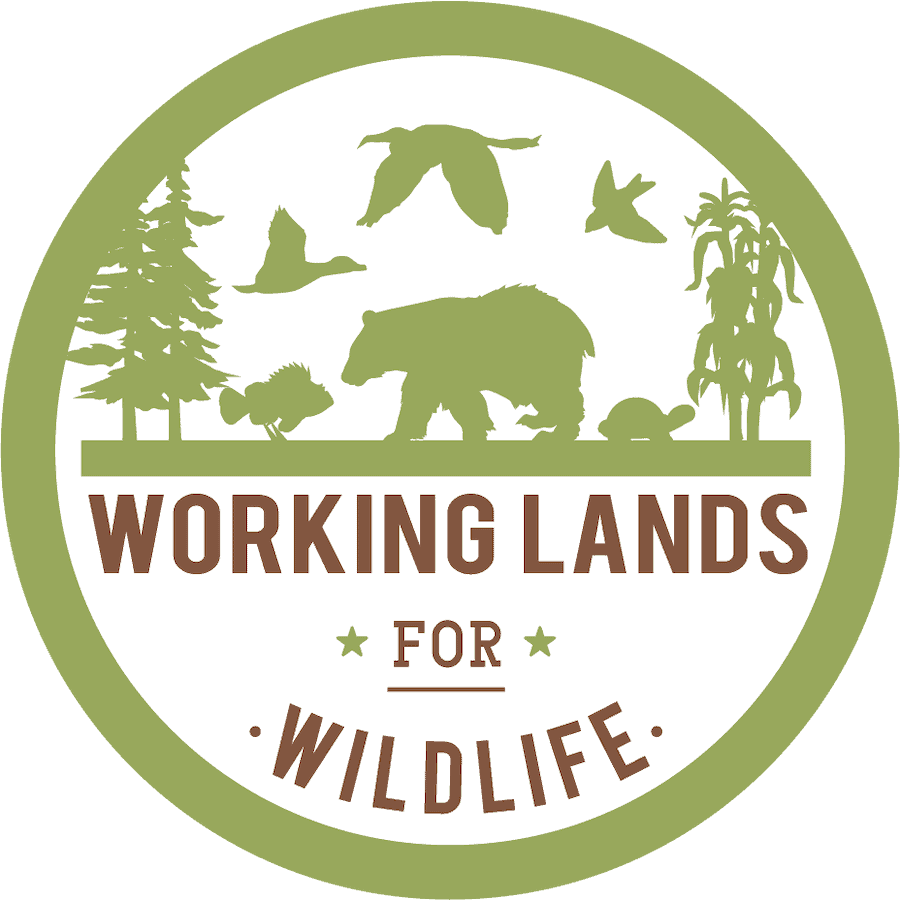-
NRCS Prescribed Burning
-
by
Tab Manager
—
published
Apr 30, 2021
—
last modified
May 03, 2021 01:33 PM
—
filed under:
Prescribed Burning,
Wildland Fire,
NRCS
Prescribed burning is applying controlled fire to a predetermined area of land.
Located in
Prescribed Burning
/
Overview
-
Joint Chiefs' Landscape Restoration Partnership
-
by
Tab Manager
—
published
Mar 09, 2023
—
last modified
May 29, 2025 05:57 PM
—
filed under:
Landowner Resources,
WLFW,
USDA,
NRCS,
Working Lands for Wildlife,
Landowner Information,
Resources
The Joint Chiefs' Landscape Restoration Partnership enables NRCS and the Forest Service to collaborate with agricultural producers and forest landowners to invest in conservation and restoration at a big enough scale to make a difference.
Located in
Landowner Information
/
Landowner Resources
-
Conservation Innovation Grants: Successful Grazing Lands - Innovation to Implementation
-
by
USDA NRCS Science and Technology
—
published
Dec 30, 2020
—
last modified
Mar 05, 2022 01:56 AM
—
filed under:
WLFW,
Livestock,
Northern Bobwhite Quail,
Webinar,
NRCS,
Cattle,
Working Lands for Wildlife,
Grazing
Join pasture specialists, local graziers, and NRCS staff to discuss the Conservation Innovation Grant (CIG) on Grazing Lands and the benefits of establishing and grazing native warm season grasses for livestock and ground nesting wildlife. See how NRCS is helping more farmers establish and utilize good grazing techniques on their farms.
Featuring Dr. Pat Keyser (Center for Native Grasslands Management), J.B. Daniel (NRCS Virginia), and Keith Tuck (Virginia Grazier).
Located in
Learning & Tech Transfer
/
Webinars & Videos
-
The Long View: Sustaining Our Oak Forests
-
by
Admin
—
published
Jun 04, 2021
—
filed under:
American Woodcock,
WLFW,
Ruffed Grouse,
Oak Forests,
Webinar,
NRCS,
Working Lands for Wildlife
This working lands webinar will educate landowners and natural resource professionals on working lands conservation programs intended to benefit wildlife species and promote oak forest diversity.
In this webinar, we will take the “Long View” by looking back in time to gain historical grounding that will help us look forward and consider how our actions today can ensure we restore and sustain oak forests into the future.
This webinar has been approved for continuing education credits. Hosted by the Ruffed Grouse Society & American Woodcock Society and the NRCS Working Lands for Wildlife program.
Located in
Learning & Tech Transfer
/
Webinars & Videos
-
A Natural Treasure: Florida's Sandhills & Grasslands
-
by
Web Editor
—
published
Dec 30, 2020
—
last modified
Mar 31, 2021 11:29 PM
—
filed under:
News,
Working Lands for Wildlife,
WLFW,
NRCS
Learn how local and state partners with USDA’s Natural Resources Conservation Service have permanently protected a pristine sandhill grassland ecosystem in north-central Florida from rapidly advancing development.
Located in
News & Announcements
/
WLFW News Inbox
-
 Sagebrush Biome Framework
Sagebrush Biome Framework
-
by
Web Editor
—
published
Jun 25, 2023
—
filed under:
Resources,
Working Lands for Wildlife,
WLFW,
Working Lands for Wildlife West,
NRCS
This framework for 2021-2025 reflects collaborative, multi-state planning efforts to update SGI 2.0, and continues to build from a decade of success conserving the sagebrush biome. This framework also serves as NRCS’ ongoing contribution to the Sagebrush Conservation Strategy administered by Western Association of Fish and Wildlife Agencies. Sharing common cross-boundary threats, NRCS staff across eleven western states collaborated to create this shared vision for conservation action.
Located in
Resources
-
 Map of NRCS States Opting In/Out of WLFW Northern bobwhite
Map of NRCS States Opting In/Out of WLFW Northern bobwhite
-
by
Bridgett Costanzo
—
published
Dec 30, 2020
—
last modified
Apr 20, 2023 09:49 PM
—
filed under:
Information,
WLFW,
Grasslands,
Northern Bobwhite Quail,
NRCS,
Maps and Spatial Data,
Grasslands and Savannas,
native grasslands,
Northern bobwhite,
Working Lands for Wildlife,
savanna
In February 2021, NRCS requested that 30 state offices within the northern bobwhite current or historic range submit a final decision to National Headquarters on opting in or out of WLFW Northern bobwhite, Grasslands and Savannas. The decisions were completely voluntary and dependent on each states interest and ability to commit. These maps depict the distribution of states and their responses. Note that Oklahoma has now joined (and we need to updated this map)!
Located in
Information
/
Maps and Spatial Data
-
 FY17-21 WLFW-Northern bobwhite Map
FY17-21 WLFW-Northern bobwhite Map
-
by
Bridgett Costanzo
—
published
Dec 30, 2020
—
last modified
Apr 21, 2023 12:01 AM
—
filed under:
map,
WLFW,
Information,
Northern Bobwhite Quail,
NRCS,
Maps and Spatial Data,
Grasslands and Savannas,
Working Lands for Wildlife,
Northern bobwhite
This map was current as of FY21 for NRCS WLFW-Northern bobwhite but updated for FY22 based on the NRCS state offices that opted into the Northern bobwhite, Grasslands and Savannas Framework partnership (by FY22 there will be 24 states).
Located in
Information
/
Maps and Spatial Data
-
 Major Land Uses in WLFW NOBO, Grasslands, and Savannas
Major Land Uses in WLFW NOBO, Grasslands, and Savannas
-
by
Bridgett Costanzo
—
published
Mar 07, 2022
—
last modified
Apr 21, 2023 12:02 AM
—
filed under:
Information,
WLFW,
Land Use,
Northern Bobwhite Quail,
NRCS,
Maps and Spatial Data,
Grasslands and Savannas,
Working Lands for Wildlife,
agriculture,
Northern bobwhite
Major land use types within the boundaries of the WLFW Northern bobwhite, Grasslands, and Savannas framework.
Located in
Information
/
Maps and Spatial Data
-
 338-Prescribed Burning
338-Prescribed Burning
-
by
Web Editor
—
published
Mar 10, 2021
—
last modified
Apr 21, 2023 12:16 AM
—
filed under:
Information,
WLFW,
USDA,
Northern Bobwhite Quail,
Job Sheets,
NRCS,
Grasslands and Savannas,
Working Lands for Wildlife,
NRCS Conservation Practices & Materials
338-Prescribed Burning. This job sheet has been modified for Bobwhite Quail management in the Southeastern United States. Caution: Prescribed burning should be conducted only by those who are trained and experienced in its use. The landowner is responsible for obtaining all permits and clearances as required by law.
Located in
Information
/
NRCS Conservation Practices & Materials
/
Job Sheets


